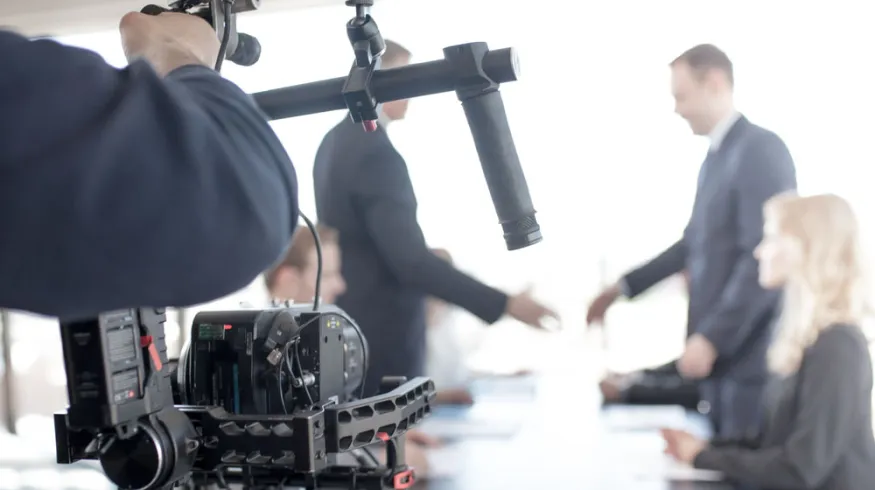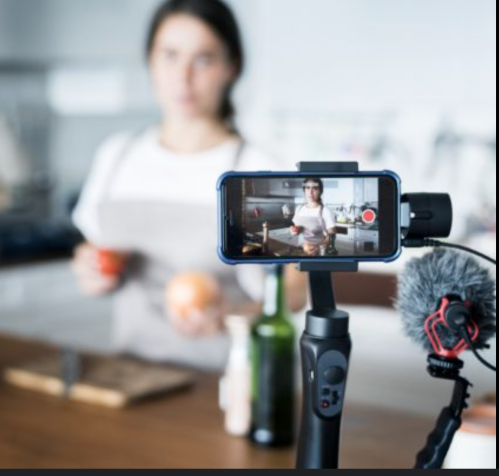We’re surrounded by videos in our life. Be it may, you having fun with your friends, a road trip, an Instagram reel, Advertising, a TV show, or a full-fledged Nolan movie.
But have you ever asked yourself, what is the process of professional video production?
We can assure you it is a lot more than just hitting a record button on the camera. It involves multiple stages from concept to final cut.
1. WHAT ARE THE STAGES OF VIDEO PRODUCTION?
Pre-production, production, and post-production are the three stages of video production from concept to conclusion.
Phase one (Pre-Production) involves all of the planning and coordination, step two (Production) involves capturing all of the elements that will appear in the final video, and phase three (Post-Production) involves editing and combining all of the materials to make the final video.
2. EVERYTHING YOU NEED TO KNOW ABOUT PRE-PRODUCTION
The first stage in the process of making a video is to plan ahead and lay the foundation. It’s critical to conduct the necessary planning, research, problem-solving, and organization during this phase to ensure the success of your video project.
The following items are included in the pre-production phase:
- Goals and strategy for video
- Budget/scope
- Choosing a story
- Timeline for the project
- Scriptwriting
- Talent/characters
- Needs for production staff and equipment
- Location Scouting
It is critical to hold a series of meetings. This method will vary depending on the size of your team and the scope of your project, but here are some guidelines to get you started.
Fact-finding: Bring together your company’s stakeholders and the video production team to discuss the video project’s purpose, strategy, and goals, as well as how it will be used when it is completed.
You’ll want to express things like branding, target audience, and the piece’s tone and feel at this point in the process.
Pre-Production Meeting: Typically, this meeting is held between the Multimedia Services team and the project’s key point person. Make sure the timetable is determined, the characters are identified, and any location specifics are finalized. This meeting can take place by phone or in person.
Site Visit: Depending on the scope of the production, a site visit to your location may be beneficial, particularly if neither the producer nor the videographer has visited it.
Preparation for the shoot: The crew will verify that scripts have been reviewed and approved, interview questions have been discussed, characters have been checked, the schedule has been finalized, and venues have been confirmed before arriving on-site for filming. All of these details will aid in the production phase’s success.
3. EVERYTHING YOU NEED TO KNOW ABOUT PRODUCTION
The meetings are over, and the planning is finished. It’s now time to enjoy yourself! During the production phase, you’ll record all of the interviews and footage for your video. This is the point at which the plot begins to take shape.
All of the raw elements for your video will be captured throughout the production phase. If you have certain concepts, ideas, or visuals in mind for the final product, make sure you’ve expressed them to your producer well before the end of the production phase.
The following items are included in the production phase:
- Sound, lighting, and camera equipment are being set up.
- Organizing interviews.
- Voiceovers are recorded (if they are needed for your project)
- Getting b-roll (extra footage that is used to support your story)
- We recommend having a primary point person on location, especially if you’re working with an outside video team, to function as a channel between the video producer and your brand.
4. EVERYTHING YOU NEED TO KNOW ABOUT POST-PRODUCTION
Following the completion of the production phase, the producer and editor begin their job. Your video production team will begin organising, planning, and editing the actual video during the post-production phase.
Your producer will go over all of the films and transcribe all of the interviews with great care. The story will then be put together by the video editor, who will work their magic to bring all of the elements together.
The following items are included in the production phase:
- Keeping track of the interviews
- Creating the final product
- selection of music
- Editing of video
- Reviews/approvals
- Delivery of the final product
Your video production team will take care of all the details that go into bringing your vision to life. So just hold your breath and wait for the miracle to happen. Expect this procedure to require some time and ingenuity, so don’t expect it to happen quickly.
The post-production step will take a variable amount of time depending on the production firm, but you should expect it to take about 6-8 weeks unless another timeframe has been established.
5. EXAMPLE OF A VIDEO PRODUCTION PROCESS:
- Understand the tales and goals by conducting research.
- Meeting of the Pre-Production Team: Establish key messaging, target audiences, and deadlines
- Story identification, storyboarding, planning, and shoot preparation are all part of the strategic vision.
- Interviews and b-roll footage are shot as part of the newsgathering process.
- Logging, scripting, generating, and editing content are all examples of content creation.
- Edits, changes, and approvals are all part of the content review process.
Conclusion
The goal should be to make the video editing process as painless as feasible. Our team can provide you with the greatest video product possible if you have all of the essential information and communicate effectively.





